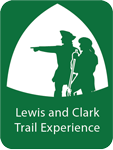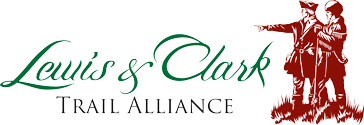Slo-ce-ac-cum (Palouse Indian, 1847)
Paul Kane (1810–1871)
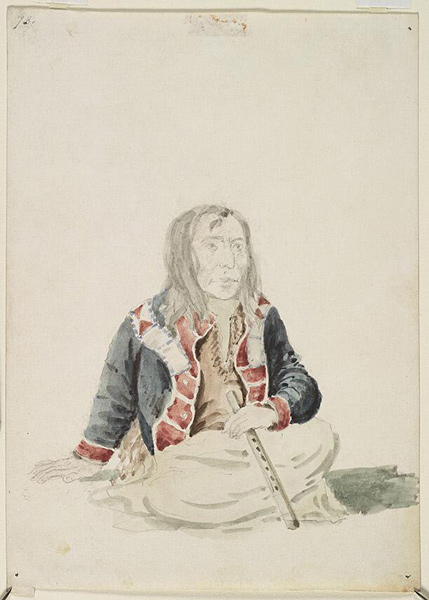
Watercolour and graphite on paper, 18.0 x 13.0 cm. Courtesy Royal Ontario Museum, https://rom.on.ca.
At the time of the Lewis and Clark Expedition, the Palouse Indians had coalesced around four primary villages on the lower Snake River: Wawaiwai, Almota, Penewawa, and Palus. Lewis and Clark estimated their population as 2,300 which included Northern Nez Perce.[1]Moulton, Journals, “Estimate of Western Indians,” 6:474.
About Slo-ce-ac-sum (see Figure), the Paul Kane wrote:
We swam our horses at the mouth of the Pelouse River, where it empties itself into the Nezperees [Snake River]. The Chief of this place is named Slo-ce-ac-cum. He wore his hair divided in long masses, stuck together with grease.[2]Paul Kane, Wanderings of an Artist among the Indians of North America . . . (London: Longman, Brown, Green, Longmans, and Roberts, 1859), 274.
Selected Encounters
October 11, 1805
Down the Snake River
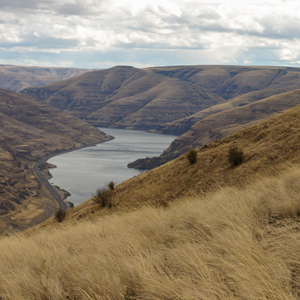
Between present Clarkston and Almota, Washington, the paddlers navigate numerous Snake River rapids where the Nez Perce and Palouse have established fisheries. The captains notice a curious sweat lodge.
October 12, 1805
Snake River rapids
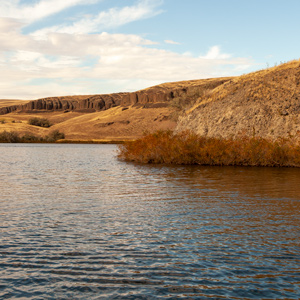
The paddlers make about thirty miles down the Snake River in present Washington. Gass describes Palouse villages, and Clark finds Sacagawea “reconsiles all the Indians, as to our friendly intentions”.
October 13, 1805
Fast water
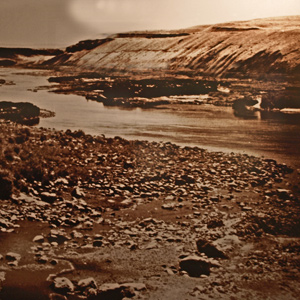
To start the day, the non-swimmers portage rifles and scientific equipment while the boatmen navigate a long Snake River rapid. Late in the day, they run a two-mile rapid which “ran like a mill race.”
October 14, 1805
'Ship Rock'
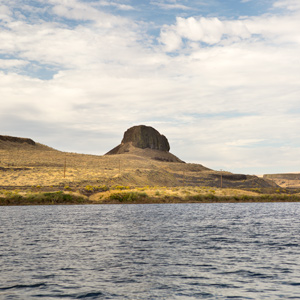
After passing a ‘ship rock’—Monumental Rock on the Snake River in Washington—Sgt. Ordway‘s canoe gets stuck on a rock and fills with water. They stop for the day and begin drying wet items.
October 15, 1805
Snake River rapids
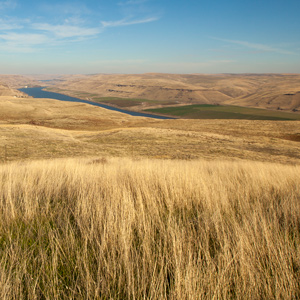
The first half of the day is spent drying items while the hunters and Lewis explore the high plains above the Snake River. They continue through several difficult rapids and camp above yet another rapid.
October 16, 1805
A musical welcome

The paddlers negotiate the last of the Snake River rapids and the expedition arrives at the Columbia River. Soon after, they are given a musical welcome from a large group of Yakamas and Wanapums.
October 17, 1805
Snake and Columbia observations
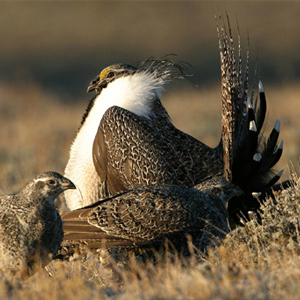
At the confluence of the Columbia and Snake rivers, Lewis takes vocabularies from the Wanapum and Yakama speakers, and hunters are sent out to collect sage grouse specimens. Clark explores the Yakama River.
October 18, 1805
Down the Columbia
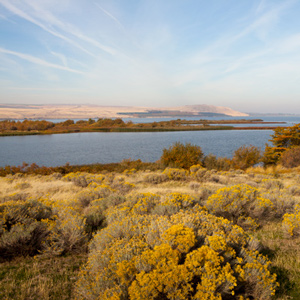
At the mouth of the Snake, the captains council with the Wanapums and Yakamas. Late in the day, the expedition heads down the Columbia and camps below the Twin Sisters in Wallula Gap.
June 8, 1806
Prisoner's base
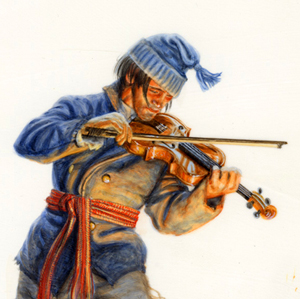
Several Nez Perce people visit, and to get the men in shape, foot races are run, and prisoner’s base is played. The sunken canoe is raised, and three horses are traded. The day ends with dancing.
July 4, 1806
Dangerous roads
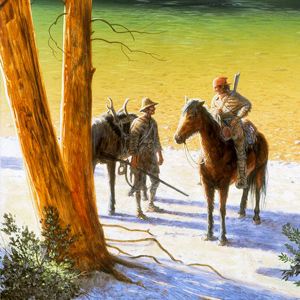
Lewis travels east on “Cokahlahishkit”—the Road to the Buffalo—along the Blackfoot River. Clark travels south up the Bitterroot River and celebrates the Fourth of July with a “Sumptious Dinner”.
Notes
Experience the Lewis and Clark Trail
The Lewis and Clark Trail Experience—our sister site at lewisandclark.travel—connects the world to people and places on the Lewis and Clark Trail.
Discover More
- The Lewis and Clark Expedition: Day by Day by Gary E. Moulton (University of Nebraska Press, 2018). The story in prose, 14 May 1804–23 September 1806.
- The Lewis and Clark Journals: An American Epic of Discovery (abridged) by Gary E. Moulton (University of Nebraska Press, 2003). Selected journal excerpts, 14 May 1804–23 September 1806.
- The Lewis and Clark Journals. by Gary E. Moulton (University of Nebraska Press, 1983–2001). The complete story in 13 volumes.
